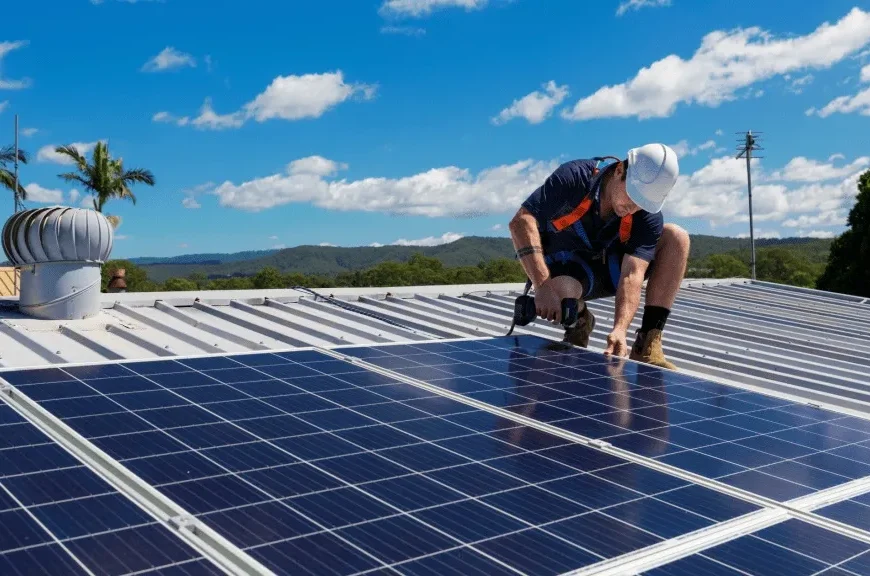Solar energy is a clean and renewable power source that has gained widespread popularity for its environmental benefits and cost savings. While solar panels have proven effective in various environments, solar panel installations in coastal areas come with unique challenges, particularly related to salt exposure. Coastal regions are known for their salty and corrosive air, which can potentially affect the performance and longevity of solar panels. In this article, we will explore the impact of salt exposure on solar panels, the challenges it presents, and strategies for mitigating its effects in coastal areas.
The Coastal Environment: A Unique Challenge
Coastal areas, characterized by their proximity to the sea or ocean, offer picturesque views and a pleasant environment. However, the salty and corrosive nature of the coastal atmosphere presents challenges for various structures and equipment, including solar panel installations. The key factors contributing to salt exposure in coastal areas are:
- Saltwater Spray: Wind-driven saltwater spray from the ocean can reach considerable distances inland, coating surfaces with salt particles.
- Salt-laden Air: Coastal air often contains salt particles carried by ocean breezes, which settle on surfaces and gradually accumulate.
- High Humidity: Coastal regions tend to have higher humidity levels, further facilitating the deposition of salt on surfaces.
Impact of Salt Exposure on Solar Panels
Salt exposure can have several detrimental effects on solar panels and their components:
- Corrosion: Salt can corrode the metal parts of solar panels, including frames and mounting systems. Corrosion weakens structural integrity and can lead to component failure.
- Reduced Efficiency: Accumulated salt on the surface of solar panels can block sunlight and reduce the panel’s efficiency in converting sunlight into electricity.
- Reduced Lifespan: Corrosion and reduced efficiency can shorten the lifespan of solar panels, leading to a decrease in their overall performance over time.
- Increased Maintenance: Solar panels in coastal areas may require more frequent cleaning and maintenance to remove salt deposits, increasing operational costs.
- Aesthetic Concerns: Salt deposits can create unsightly stains on the surface of solar panels, affecting the visual appeal of installations, particularly in residential areas.
Strategies for Mitigating Salt Exposure
Addressing salt exposure in coastal solar installations requires proactive measures to protect the panels and maximize their performance. Here are several strategies for mitigating the effects of salt exposure:
- Choose Corrosion-resistant Materials: Use materials that are resistant to corrosion, such as anodized aluminum for frame construction and stainless steel for mounting hardware.
- Regular Cleaning: Implement a routine cleaning schedule to remove salt deposits from the surface of solar panels. This can be done with freshwater or specialized cleaning solutions.
- Anti-reflective Coatings: Consider applying anti-reflective coatings on solar panel surfaces. These coatings can repel salt and reduce the accumulation of deposits.
- Tilted Mounting: Installing solar panels at a slight tilt can encourage self-cleaning as rainwater washes away salt deposits. This can be especially effective in regions with regular rainfall.
- Sealed Electrical Components: Ensure that electrical components, such as junction boxes and connectors, are properly sealed to prevent saltwater ingress and corrosion.
- Elevated Mounting Systems: Elevate solar panel arrays to reduce the risk of saltwater inundation during extreme weather events, such as storm surges or high tides.
- Monitoring and Maintenance: Regularly inspect solar panels for signs of corrosion or salt buildup. Address any issues promptly to prevent further damage.
- Coastal-specific Solar Panels: Consider using solar panels designed specifically for coastal environments. These panels may have additional protective features to withstand salt exposure.
Case Study: Solar Panel Installation in Coastal California
Coastal California is known for its breathtaking coastline and mild climate, making it an ideal location for solar panel installations. However, the region’s proximity to the Pacific Ocean means that solar panels are exposed to salt-laden air and occasional coastal storms. To address these challenges, solar panel installations in coastal California often incorporate the following strategies:
- Tilted Mounting: Solar panels are mounted at a slight tilt to encourage self-cleaning when rainwater washes away salt deposits. This design also reduces the risk of standing water that can lead to corrosion.
- Stainless Steel Hardware: Stainless steel hardware, such as bolts and brackets, is used to resist corrosion caused by salt exposure.
- Regular Maintenance: Solar panel owners and maintenance teams in coastal California adhere to a strict cleaning schedule to remove salt deposits and ensure optimal performance.
- Anti-reflective Coatings: Some installations apply anti-reflective coatings to solar panels to reduce the adhesion of salt and minimize surface staining.
- Sealed Connections: Electrical connections and junction boxes are carefully sealed to prevent saltwater intrusion and corrosion.
- Elevated Ground-mounted Systems: Ground-mounted solar panel systems are often elevated to mitigate the risk of saltwater inundation during coastal storms or high tides.
Conclusion
Solar panel installations in coastal areas offer numerous benefits, but they also come with unique challenges related to salt exposure. The corrosive nature of salt and its potential to reduce panel efficiency and lifespan require careful consideration and proactive measures. By choosing corrosion-resistant materials, implementing regular maintenance, and employing strategies such as tilted mounting and anti-reflective coatings, solar panel owners in coastal regions can maximize the performance and longevity of their installations. As the demand for clean energy continues to grow, addressing salt exposure in coastal solar installations becomes increasingly important in harnessing the power of the sun while preserving the integrity of the panels.










